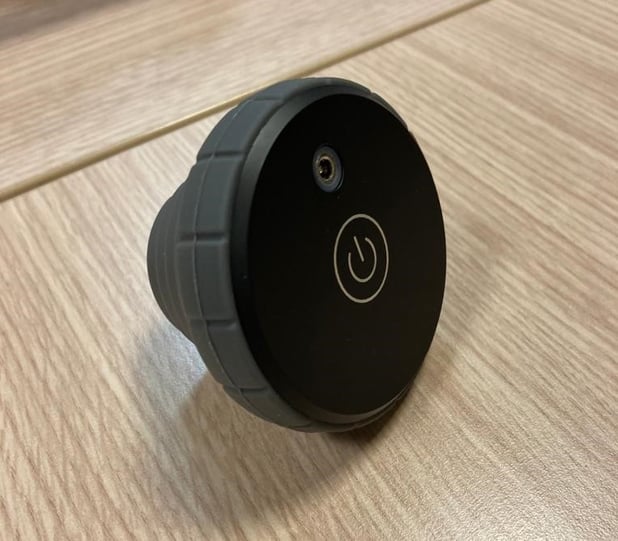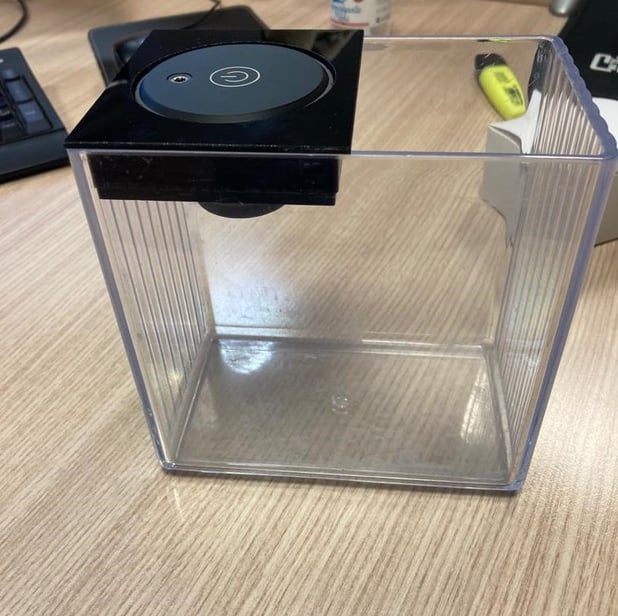
The collaboration between SLIM and Quick Mill: the UV-C LED steriliser kit
The Covid-19 emergency has helped to raise awareness of sanitisation, not only of viruses but of all microorganisms that are harmful to health. Among the sanitisation procedures, UV-C technology attracted considerable interest, as UV-C light is able to eliminate viruses and bacteria by modifying their DNA.
It was during the pandemic that Quick Mill S.r.l., a company based in Senago (MI) and specialised in the design and manufacture of domestic and professional coffee machines, asked for our collaboration to create a UV-C LED holder for sanitising the water tank of their coffee machines.
With the help of Mr Stefano Chinaglia, Export Department, and Mr Domenico Genito, Research and Development, of Quick Mill, we went through all the stages of the collaboration.
Read to find out more!
Contents:
- Quick Mill: an overview of the company
- The application
- The collaboration with SLIM
- SLIM's solution for Quick Mill
Interested in this topic? Click on the button below and read more about UV-C LED.
Quick Mill: an overview of the company
Good morning Stefano and Domenico, before talking about the collaboration with SLIM, can you tell us what Quick Mill is all about?
Mr Chinaglia: Our company produces extremely functional and easy-to-use coffee machines for domestic use, for more than 40 countries worldwide. We offer a high-quality product, both internally and externally, that stands out for its clean and essential design. We have been on the market since 1945 and, over time, we have expanded our range to include grinders, commercial and automatic machines and other accessories. Our latest innovation is the steriliser kit created in collaboration with SLIM.
The application
How did the idea and demand for a sanitising device for coffee machines come about?
Mr Genito: The idea came about during the first lockdown in 2020, when we thought we could contribute to people's health by creating a device to sterilise the coffee machine or water. Various UV-C room sanitisation devices began to become popular during those months.
We aimed to create a tool that could further improve the Quick Mill products. I immediately contacted Mr Cattani and shared my ideas: from that moment on, an exchange began that led to a series of proposals from SLIM. After a few months, we decided to develop a UV-C sanitisation kit that would purify the water in the tanks in just a few minutes before dispensing the coffee.
We started supplying SLIM with prototypes of the tanks. From that moment on, an in-depth study began on how to use the same light source for the two types of tank we produce. SLIM identified the most suitable UV-C module and made a plastic holder that allowed the same module to be placed on top of the tank. This location was designed so that during the disinfection process the UV-C rays would avoid hitting the eyes or other parts of the user's body.

The collaboration with SLIM
Why did you choose SLIM for this project?
Mr Genito: We first worked with SLIM about five years ago, when we started using light sources on our machines. What impressed us about SLIM is definitely their timeliness, which is a central aspect for us.
Other reasons are their experience and continuous innovation in the development of functional lighting solutions, with an emphasis on aesthetics. In fact, the appearance of the light sources is important because, being placed at the front of the machines, they must satisfy the end customer. SLIM helps us to do just that, which is why we immediately thought of turning to them for the project.
SLIM's solution for Quick Mill
How is the steriliser kit made with the SLIM support organised?
Mr Chinaglia: The complete kit includes a holder, a light source, a power cable with a USB port and an instruction booklet. The UV-C module is mounted on a plastic holder that fits onto the tank. Above it is the button to start the sterilisation cycle, which contains a LED that changes colour when the operating status changes. For example, the LED turns fuchsia to indicate the need for recharging.
How does the UV-C LED for tank sanitisation work?
Mr Genito: Once set up, the circuit inside the plastic holder starts a 180-second sterilisation cycle; if held down for longer, it carries out 360-second cycles. A first cycle of 180 seconds already shows bacterial destruction: a double cycle completes the sanitisation process and the destruction rate rises to over 99%.
These data were supplied to us by Pro Lab service S.r.l.: the laboratory was able to identify the bactericidal strains in the drinking water and carry out in-depth analyses, demonstrating that the process of eliminating germs and bacteria had been successful.
What are the advantages of introducing the UV-C LED sanitisation kit?
Mr Chinaglia: Certainly the possibility of providing the end-user with something extra in addition to the machine, an accessory that focuses on the user's health. The advantage of the kit is that it does not oblige the user to choose a specific machine or to replace the one they already own, in order to have the steriliser: whatever model they choose, they can add the device and increase the safety of the machine.
What were the main challenges in developing the UV-C LED sanitisation device?
Mr Genito: We started by creating two types of holder to house the light emitter. Thanks to SLIM, we have now found a single solution that meets our requirements: a single support that can be adapted, adjusting it in different ways, to both of our tank models, which are compatible with around 50 different models of coffee machines. This allowed us to save on the mould while meeting the requirements of functionality.
In addition, an initial version of the project required the circuit built inside to operate in a 90-second cycle, which turned out to be too short to work effectively. SLIM was able to create a customised product, both in terms of configuration and functionality, capable of sustaining a longer cycle that led to the desired results.

Can the device be used for other products besides coffee machines?
Mr Chinaglia: At the moment, the kit is designed for coffee machines, but given the initial results we don't deny that there may be further applications in the future.
In the first pilot phase of the project, we produced a pre-series for some of our customers with the device included inside the machine. The positive feedback prompted us to create an accessory product with SLIM, which could be sold separately.
At what point was the relationship with SLIM particularly fruitful?
Mr Genito: SLIM's support was fundamental right from the start. The initial idea was to create another type of kit: a sterilising device for housing coffee cups. However, the main problem was the reflection and dispersion of the LED light: as all our machines are made of steel, this effect would have created criticalities.
SLIM's knowledge and expertise in the field was crucial: their speed in finding solutions helped us to identify a replacement device to sterilise the water in the tanks.
In addition, their collaboration with a professional laboratory, such as Pro Lab, allowed us to carry out the water analysis and certify the product without extending the development time of the device. The first satisfactory results of the tests encouraged us to implement this innovative project.
We would like to thank Mr Chinaglia and Mr Genito for their contribution and for showing us the steps of the project undertaken with SLIM!
Would you like to know more about the custom projects carried out by our company? Click on the button below and fill in the form to receive the free document on Case Studies.

